The UK’s next-generation air defence warship, the Type 83 destroyer, will sustain work for the British defence industry until at least the mid-2040s, according to Defence Minister Maria Eagle.
The update came in response to a parliamentary question from Luke Akehurst MP (Labour – North Durham) regarding the impact of the Type 83 programme on sovereign capabilities, supply chain involvement, and social value.
“This Government is committed to delivering a thriving shipbuilding sector across the UK, supporting the whole supply chain, from design to repair, systems and integration,” Eagle stated.
The Type 83 Destroyer is part of the Future Air Dominance System (FADS), designed to replace the Royal Navy’s current Type 45 destroyers.
When asked whether the design, manufacture, and support for Type 83 would be carried out by UK companies, Eagle said that specifics remain subject to due commercial process. However, she said that the programme will support UK defence jobs:
“The build of the Type 83 will secure work until at least the mid-2040s, depending on the number of platforms built,” she said, adding that supply chain involvement and social value considerations will be analysed in the concept phase.
While no official confirmation has been given on where the Type 83s will be built, the Government’s Defence Industrial Strategy strongly supports domestic naval construction, ensuring continued investment in sovereign shipbuilding expertise.
The Type 83 programme is in its early concept phase, but it will be a key component of the UK’s future naval capabilities, designed to replace the air defence capability provided by the Type 45 fleet.
At the UK Defence Journal, we aim to deliver accurate and timely news on defence matters. We rely on the support of readers like you to maintain our independence and high-quality journalism. Please consider making a one-off donation to help us continue our work. Click here to donate. Thank you for your support!


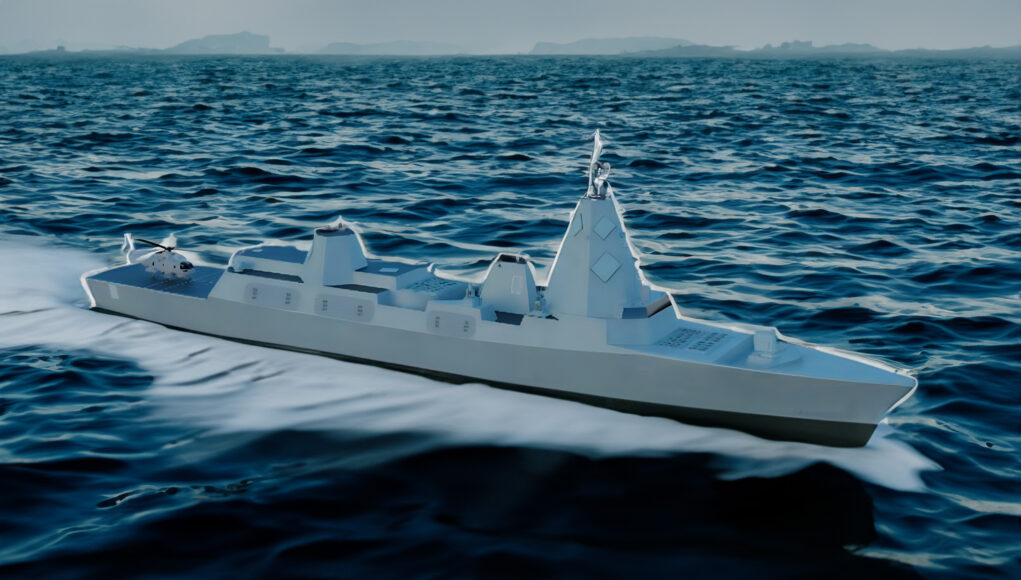
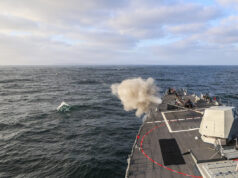
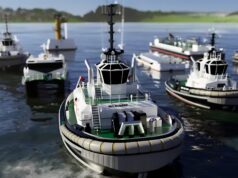
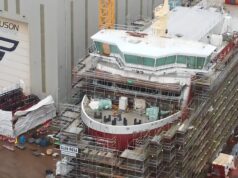
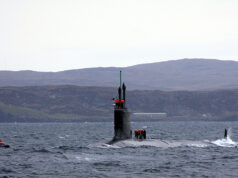
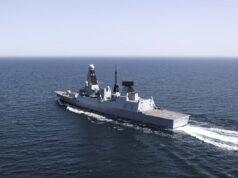

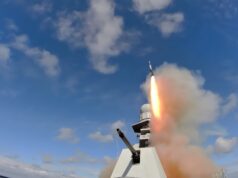
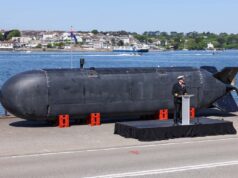
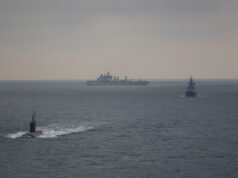
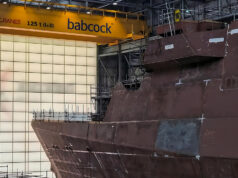

This is a fundamental problem
Lack of mass kills a high end navy..without mass quality begins to falter as you can no longer complete all your taskings as well as release ships and crews to spend plenty of time training and practicing. Lack of mass also kills readiness as all your ships are either bing tasked or maintained. But most importantly you are not able to demonstrate the 3 Cs or deterrent without mass and if a military cannot deter its failed in its primary and most important function…engaging in kinetic peer warfare you did not want is essentially losing, even if you win.
But the future generation radar require a huge ship 10,000+ tons and that’s expensive and so reduces the mass…what does the RN Do
In reality it should never have dropped below 20 frigates and 10 AAW destroyers and the government does have to face that reality while also producing a high end AAW platform ( aka over 10,000 tons ) for the carrier battle group.
I do wonder if we are making a mistake by looking at dedicated high end AAW destroyers and ASW frigates as opposed to a single run of destroyers capable of carrying out both roles.
The USA does it, the RN has traditionally focused very heavily on the ASW capability given its proximity to Russia however the Russian naval threat will be greatly diminished in future. Do we need to put everything into expensive one trick ponies insisting it’s sub optimal to run ASW and AAW on a single hull or do we just accept some compromises like the Arleigh Burkes do.
Modern radars are getting smaller and more energy efficient and off board sensors and distributed networked capability will increasingly be a thing.
Modern radars are not getting smaller, not if you want a destroyer capable of taking on peers.
But also, RN doctrine doesn’t look to change anytime soon on separate classes. But some equipment not being included is also just a cost thing
The new SPY-6 radar is significantly heavier than the legacy SPY-1. Which is why on the early Flight Arleigh Burkes, they have to use a cut down version. Only the latest Flight 3’s can fit the full size SPY-6.
With a maximum of 24 hulls if T32 goes ahead, it really doesn’t make sense to have 4 separate classes of escorts. Even if a more modern fleet raises availability from 1 in 3 to 1 in 2, leaving 12 max, you may have limited availability of the capability you actually need most. Having multi purpose vessels able to cover all key roles would enhance the deployable effectiveness of the overall fleet. On current contracted plans, we will only have 8 ships with ASW capability. Is that really enough?
It’s not enough. But we cannot afford multi role vessels. Anything other than baseline capabilities will get cut
Any major surface combatant built today should be able to carry out the full spectrum of roles particularly AAW and ASW. Pretty much every other modern navy can afford multi mission destroyers & frigates so why can’t we?
T32 should just be a second batch of Type 31. Anything else just wastes money on development costs.
2nd batch of 5x Type 31s would increase to 24 hulls for a relatively low price.
8 dedicates ASW ships probably is enough, as long as that’s all they have to do, and leave the Type 31s to other roles.
That would keep it at 3 hull types.
Probably should have a batch of T26 and T31 on top of what is presently on order
For
10 T26
10 T31
That is essentially what the RN always needed from a frigate fleet.
AAW wise there really should be 10 ordered, but you could cut that requirement if you for instant up graded the T31 B2 to a frigate with a reasonable area defence capability..improved radar and CAMM ER/MR…you could probably get way with 6 AAW destroyers..if backed by a solid mid capability AAW/surface action focused T31 batch.
not while there is such a poor balance in numbers with Russia’s submarine fleet
The T26 could easily have been an Arleigh Burke equivalent, but simply doesn’t have the radar power or all Mk41 launchers, should be a relatively easy upgrade to fit a more capable radar (like the Canadians and particularly the aussie versions have done) and get rid of those bloomin’ ‘mushroom farms’.
those mushroom farms on the T23’S have done the business dealing with the houthi drone warfare. it’s not that long ago that we were trumpeting the ability of Montrose to fire sea ceptors receptor from the,’farm’.. didn’t do the ships career much good
The big risk of multi role escorts is that instead of the 13 frigates and 6 destroyers, the number cut becomes easier and you end up with 10 multi role because you don’t lose a capability! I’m happy to have the 3 classes of escort as it keeps numbers up ( I don’t think you can order lass than 5 frigates or destroyers unless you go off the shelf as it would be prohibitively expensive)
destroyers and the number of them defines the power of a nations fleet fast long endurance and heavily armed. you can’t have too many especially the air defence model the Americans are reducing the arleihgh burke numbers as they wait for the constellation frigate. the 6 TT45’S are being flogged and will be worn out well before their due dates
whate we won’t have one in service before 2030.
It will be too few and too late as it always is so why bother? We are now caught between to fascistic oligarch controlled lawless states with no where to go so our tiny navy is not worth worrying about. Maybe we should side with China as the least worse option in the world? (joke)
“It will be too few and too late as it always is so why bother?”
Better late, than never!
May not be a joke in a few years. China is not a regional threat. Russia is and (with direct threats against Canada and Denmark plus comments aimed at other European countries) America is quickly becoming one. America is becoming increasingly unreliable and dictatorial, treating allies as subjects.
the sheer arrogance of the Americas interfering with the defence capability of European nations armed forces is getting to be a too often heard one if Europe did have its own single armed forces, a concept that I am coming around to, that could marginalise American influence would be a great boon to the security of the Egyptian continent. a position where the American presence on European soil would allow more scope for the politicians to make their own policies and, not as it is now in the case of being American poodles to join the Americans adventures in the middleast.
Obviously there’s not much room left in BAE’s new frigate build hall but I think they could increase the length of the T26 design just a little which should be big enough for the T83. It should help reduce the design and operational cost with the very very small chance of an increase in hull numbers.
T26 design is no good for a destroyer, not if we want to keep it up to date with new equipment
I’m no ship builder or sailor so I resign to better judgement from others with more knowledge. Would just like to see the RN and HMG look for ways to save costs (if practical) rather than throwing money it into the air and letting it blow away in the wind.
Certainly. Unfortunately there doesn’t seem to be any joined up thinking. As to T26 a recent NL article said it had less than 500 tons of free displacement for upgrades
There is a fair difference between the RN version and that of Canada and Australia though.
I think it’s been said a fair few times on here that nothing is ever as simple as “stretching” a hull any more. A destroyer ideally needs a high top speed and manoeuvrability, so you would need to rearrange and expand the machinery spaces. That then affects bunkerage and the trim of the ship, without even considering what happens to the superstructure.
A new-build design is clearly necessary tor a modern destroyer, but the main cost will be in the radar and CMS so that isn’t as much of a problem as people seem to think.
However, any new design will be constrained to certain maximum Lengths due to the rather limited thinking given to future vessels being built undercover in both of the new sheds. Let’s just take a look at the new PLAN, Japanese and Italian designs, none would fit in the new halls on the Clyde or Rosyth. So what we are left with is a compromise.
There’s also the fact that ship design is a perishable skill. If you don’t design ships, you loose the ability to do it reliably. This is why after nearly 40 years of Arleigh Burke variants, the US has utterly failed to bring a new surface combatant into service and had to turn to Italy for a design. At some point it’s worth spending a bit of money to keep that capability.
We should aim for a joint project with another navy that’s serious about AAW, don’t think it’s worth a bespoke UK design for a maximum of 6 ships. On the other hand, would a joint design, with a sovereign radar and CMS, actually save enough money to order a 7th or 8th ship? Perhaps a joint radar and CMS project, probably with France and THALES, makes more sense?
France already have their radar for their next destroyer, probably an expansion of the ones on the FDI.
Joint project is unlikely tbh. France is gonna be waiting a while for their next destroyers while they pay for PANG, and Germany is going full American and working on their ships a lot sooner. Netherlands is doing Apar which sucks, Danes have given up? Or won’t do anything soon
6 already demonstrated to be to few. But likely the best we can hope for.
At >10k tons they will not be cheap and will need to be as good or better than the T45s that they will replace.
Let’s hope radar and missile development continues to support the Area Defence System that will need to be its premier system within all the other Systems making up FADS.
I’m thinking that the Chinese type 055 will set the benchmark in terms of figuring out strike capability/countermeasures.
ABM capabilty should be a required feature.
Last set of plans had ABM being reliant on the Americans, at least SM3 level ABM
Is this actually confirmed by the government or BAE? Because the last time I saw this claim, they were referencing an assumption in a Navy Lookout article.
As far as I know, Type 83 capabilities have not been defined as of yet.
The actual steel will be the cheapest part. Its the weapon systems, engines etc that adds significantly to the cost. Especially when you may be considering of fitting 96 or so VLS cells, which then need filling.
12, then 10, reduced to 8, cut to 6, commission 4, sell off 2.
Exactly.
This may sound rather Pessimistic to many, but I seriously hope that the overall design and specifications of the Type 83 Air Defence Combatant is delayed until the next Parliament, so long as it is a Real and actual change in Political Parties. As I really don’t trust the current administration to allocate the right amount of funding, so as to not end up with a Cut Price Combatant, lacking in both Sensor and Firepower capability, alongside compromised Sea Keeping Abilities, with its overall ability to hold its own in any Prolonged Engagement compromised. All for the sake of appeasing the bean counters of the Treasury. who will in no doubt rather throw money away on other bloated government departments and pointless policies. Of course the quality of a ship’s Crew is everything in terms of projecting successful Maritime Power and the success of any Warship design, but at the end of the day, they can only work with what they are given to serve on.
T83 will be the last class in the current build queue. So there should be no valid reason to cut the numbers to fund other classes (i.e. T26). However, lack of common sense will prevail and a much heralded plan build for 12 will get reduced to 3 by successive government meddling. Situation normal. Politicians don’t value security. Nothing new there.
In the meantime they need to get the T45 upgrades done and maximised. Missed opportinity there to put 2x mk41s or more than the 24 CAMM. As an interim the T31s if getting mk41s can get their radar capabilities upgraded including for AAW and if not all 5 ships, maybe 3 of newbuilds. Doesn’t have to have Aster, why not uilise the Anglo Polish CAMM-MR Narew system?
They’ll probably plan to build 12 (numbered actually needed), costs will escalate so number forecast will be reduced sequentially from 12 to 10 to 8 to 6 and then eventually only the first two will be built.
Unless contracts are signed at fixed price and fixed delivery in blood than BAE systems will rip off the UK taxpayer.
HMG won’t frontload the programme with the budget and release it to pay upfront for all the ships or large batches of ships. Result. Drip drip drip into shipbuilding, no certainty for constructors and escalating costs as each ship requires 6-10 years to build due to glacial release of funding and trying to stretch the programme out to make it “affordable”.
Hopefully the Donald has lit a fire under HMGs SDSR so we are at least going to get to 3% GDP to defence ratio quicker than the “sometime in the mid to late 2030s”
Here is an idea, separate design and build contracts. The design contract results in the MoD owning the design including the right to use any IP associated with the design. Then a seperate build contract. Thus allowing shipyards that might not have a massive design capability to bid for the build business.
This will become an everything anywhere at once Destroyer.
These really need hugely expediting through design to get an initial order placed this year so that we can start to increase destroyer numbers this decade, not in another 15 years from now….